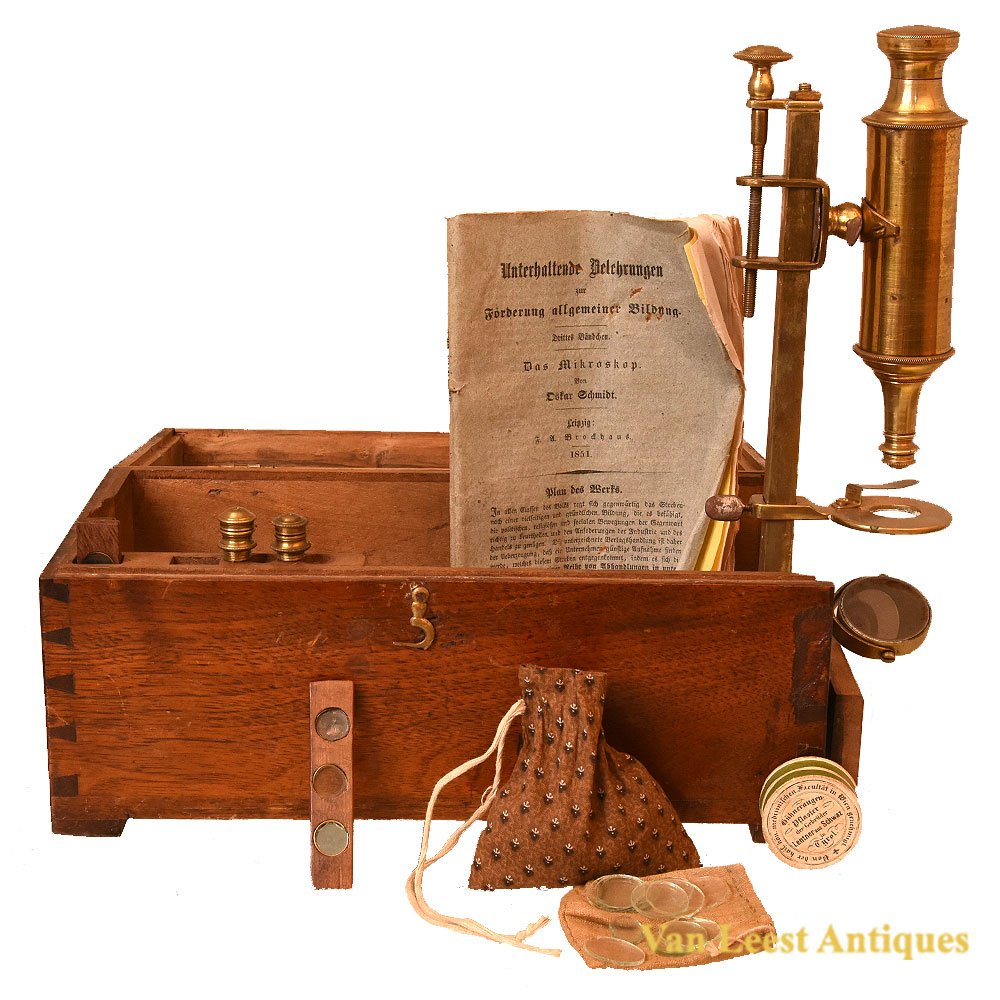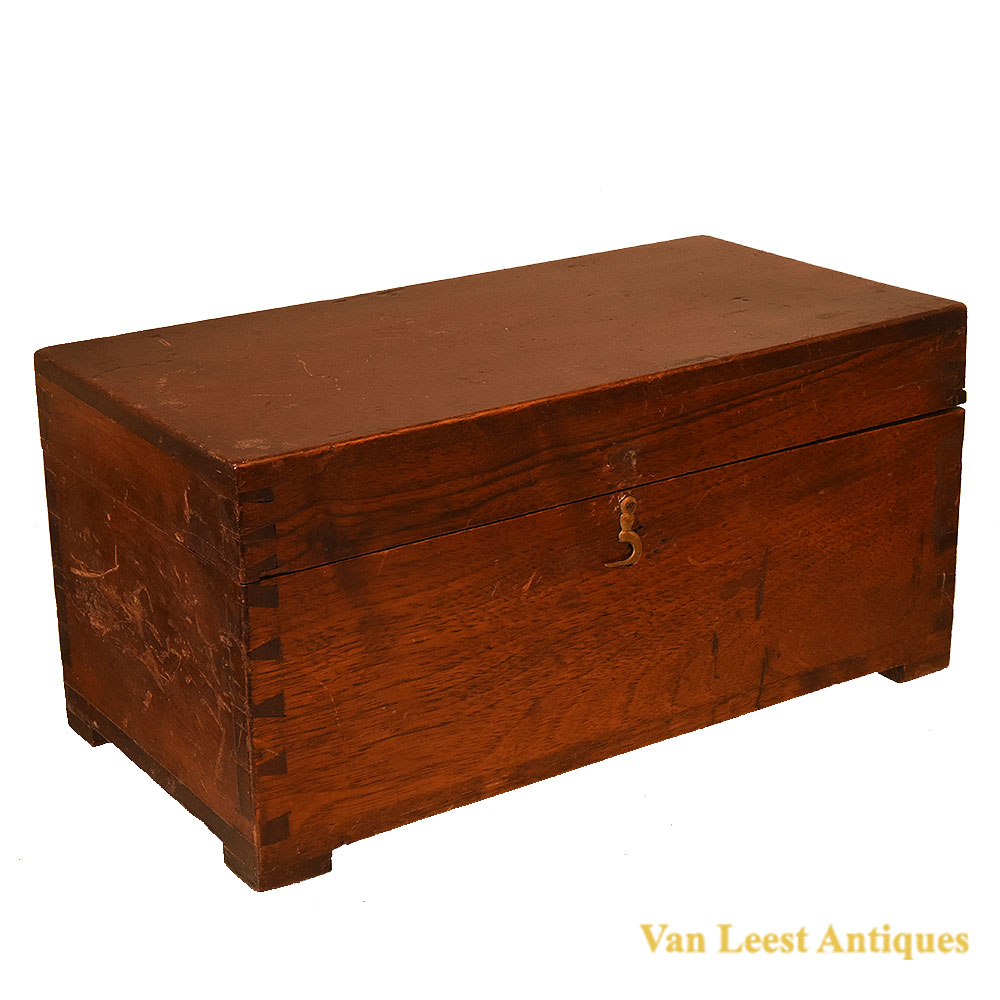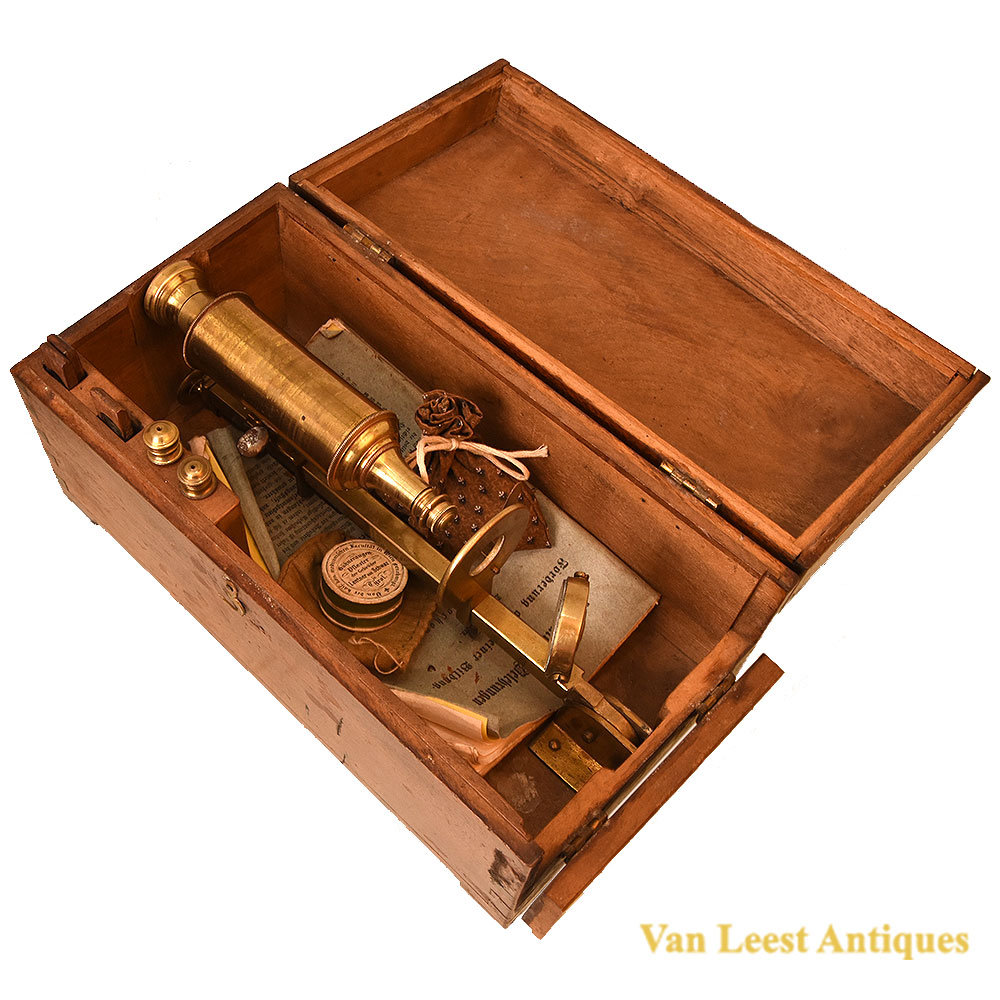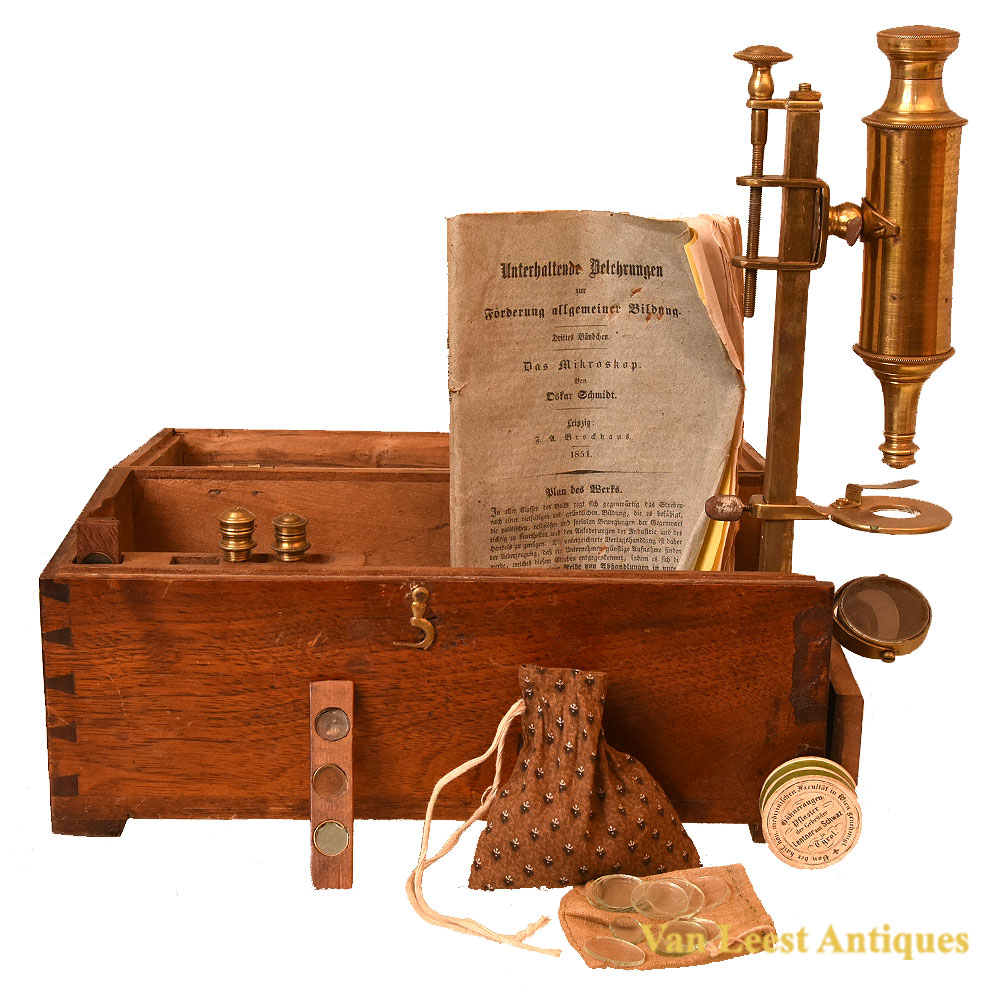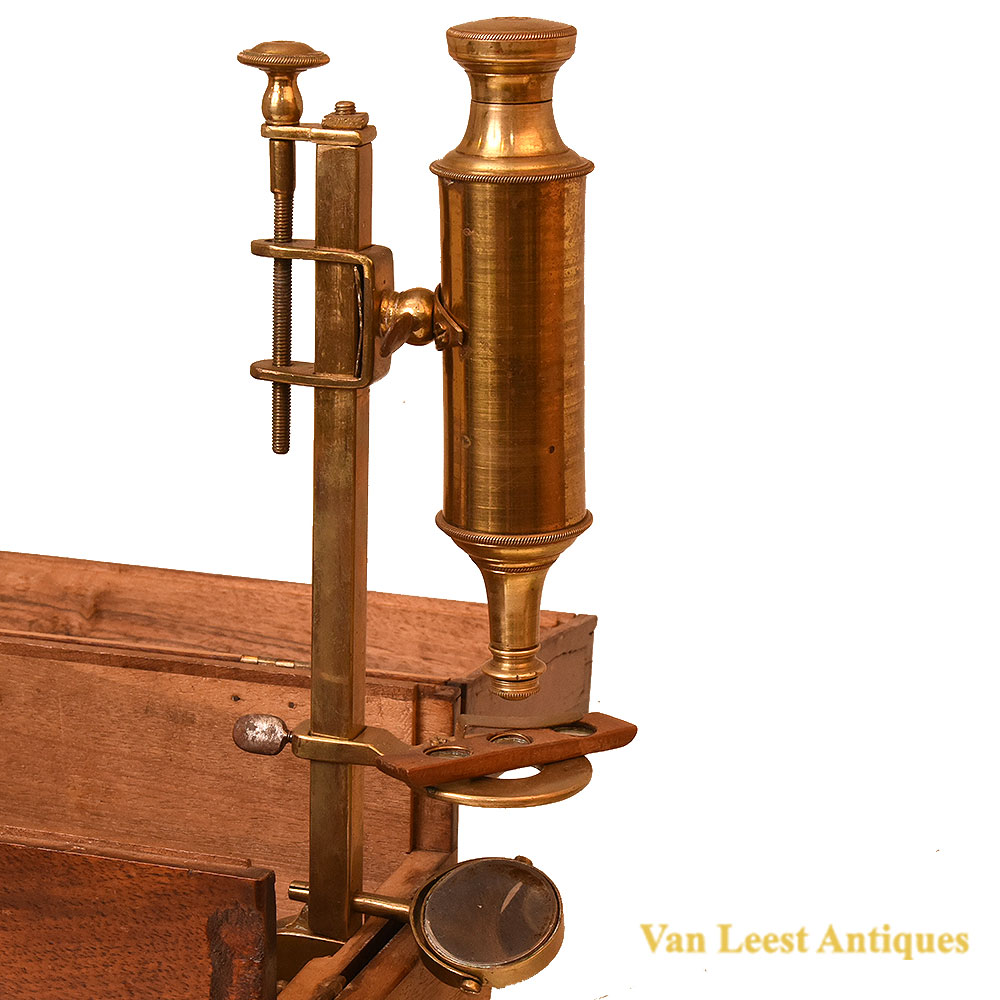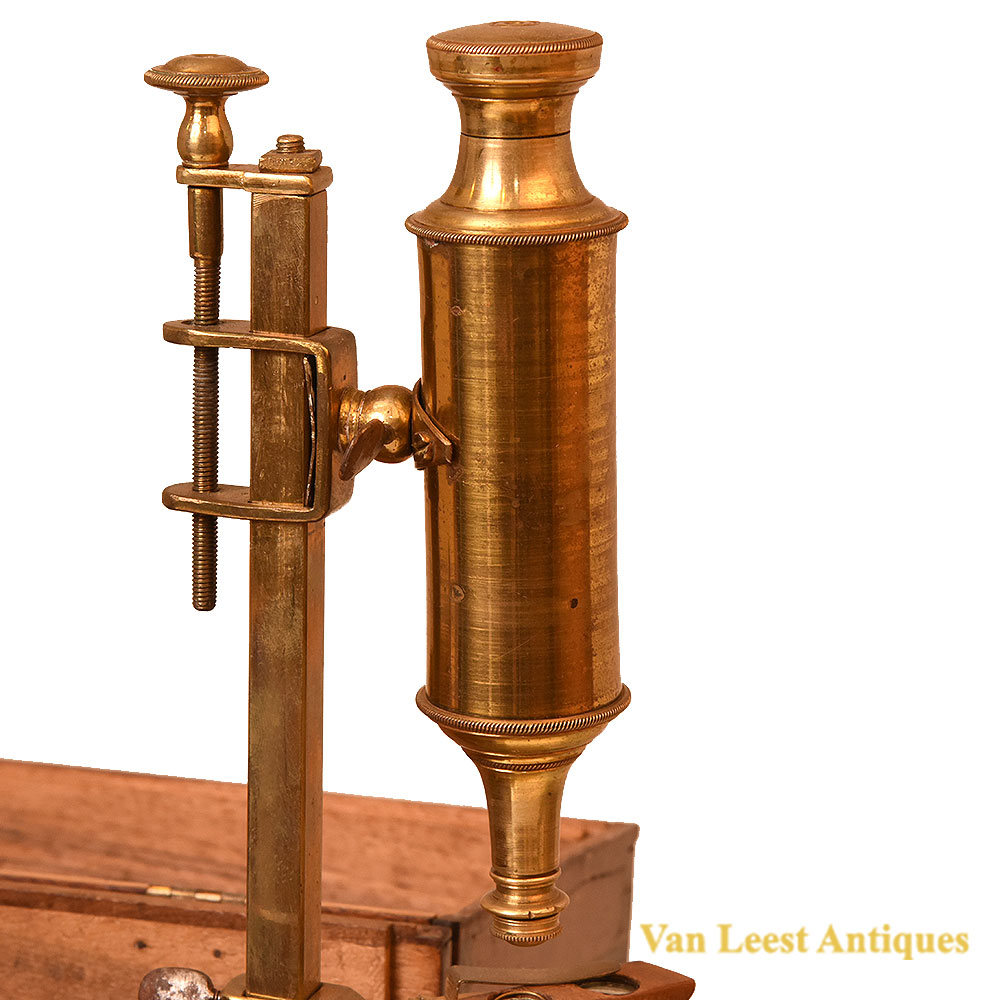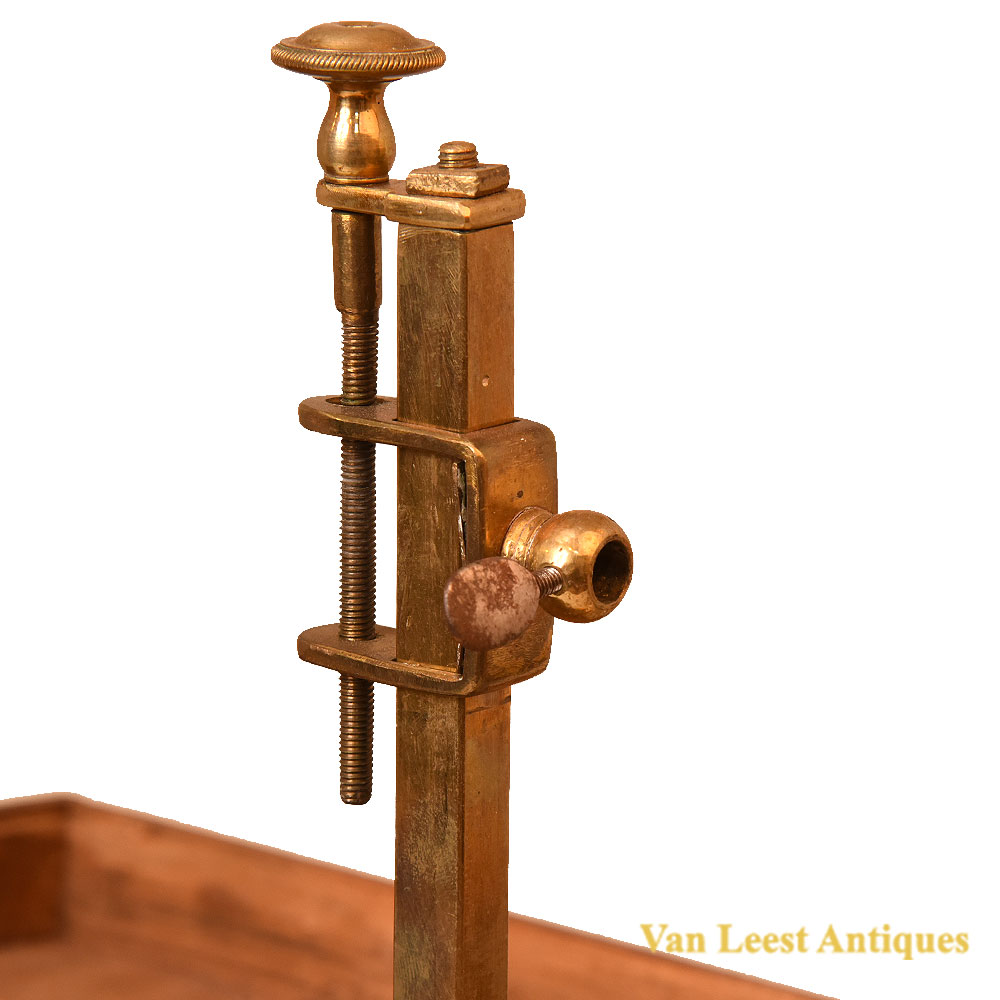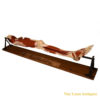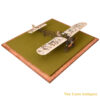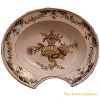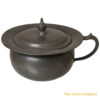Description
The Chest microscope is an improvement of the Cuff-Type microscope. Following its debut, “Mr. Cuff’s innovatively designed Double Microscope” swiftly rose to prominence as the predominant model throughout the latter half of the 18th century. It was widely replicated by numerous manufacturers in both England and across Europe. One main drawback of the Cuff-type design was the inability to incline the stand for convenient observation.
Around 1770, Edward Nairne, a British scientific instrument designer, enhanced the design of the cuff type. Nairne introduced a more mobile wooden chest to replace the solid pillar, serving as both a foundation and a storage container for the optical instrument and its accompanying components. The microscope is affixed to the chest through a compass joint, which supports the pillar. The projecting mirror is mounted on an adjustable arm, and there’s a three-winged Cuff-style stage with a bracket that can smoothly slide along the squared pillar for precise focusing on the side.
The microscope is housed in a solidly made oak chest with few inner compartmets in which objectives and slides can be stored. When opened a part of the box, which is attached by hinges can be unfolded, in order to in order to allow free movement of the single-sided plane mirror as the stand is erected. The plane mirror is made of polished steel and can be inserted and clamped in the main supporting limb. The construct of the main supporting limb of the microscope is consist two pillars: one fixed and one sliding. The body tube is attached to the sliding pillar by means of a rounded arm, in which it can be secured by a screw. The stage is attached directly below the body tube to the fixed pillar with a securing screw. The stand is fixed to the chest by four screws. The pillar can only be set still at a standing angle.
The small one sided stage can be rotated in or out position by tightening a screw and slides can be clambed by a screwed arm. The most special details of this microscope are the objective lenses, which can be unscrewed. In the objectives are little spherical glass lenses. Probably these objectives are original to the microscope.The microscope comes with extra glass lenses which can be used to make new experiments and a box of the ‘medizinische Faculät in Wien’ containing spare screws.
Also a little book is kept in the chest: Oskar Schmidt, Unterhaltende Belehrungen zur Förderung allgemeiner Bildung Das Mikroskop, Leipzig 1851.
The author Oscar Eduard Schmidt (1823–1886) was one of the earliest advocates of Darwin’s theory of evolution and applied it in his areas of research. In doing so, he extended the application of the idea of descent to the entire realm of life, from its origins to humans. In 1873, he wrote:
“[…] we may, indeed we must conclude that life appeared at a certain point of cooling down in a natural way, that is, without an incomprehensible act of creation, […]”
And on the peculiarity of human language:
“Even if one were unclear about the origin of language or even had to concede complete ignorance on this point, one should not, it seems to us, deduce from the presence of language the inapplicability of the doctrine of descent to humans, without arbitrarily breaking the chain of intellectual operations.”
Exactly datable is not possible for this microscope, but it it should be made in the first half of the 19th century.
Box dimensions: 28 cm x 14,8 cm x 13,8 cm.
Microscope height 28,5 cm.
Look for shop information on www.vanleestantiques.com
Ask the Dealer
Dealer information
 Van Leest Antiques
Van Leest Antiques
Van Leest Antiques
Van Leest Antiques, based in Utrecht in the Netherlands, specialises in antique scientific and medical instruments. Their collection covers mainly scientific and medical antique instruments: barometers, globes and planataria, nautical instruments, anatomical models, and pharmacy items. Toon Van Leest travels regularly in Europe and visits trade fairs, auctions, and antique dealers to collect stock and to find pieces to fulfil his clients' unusual requests.
As well as being an avid antique collector and dealer, Toon Van Leest is also a dentist. He believes that antiques are a stable investment, not reliant on trends or fashion, and have truly lasting value. Above all, he says, antiques are timeless and never lose their beauty.




